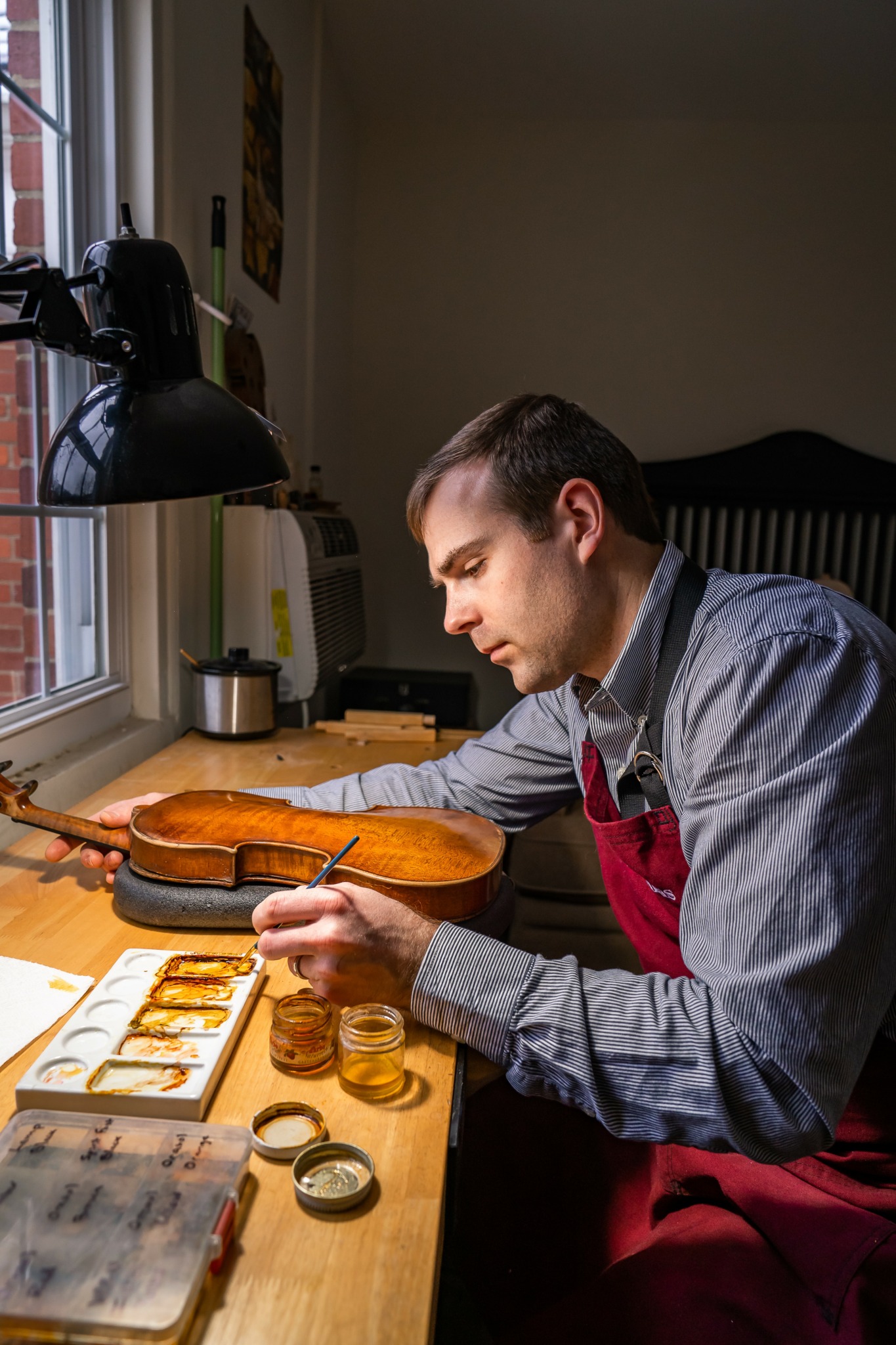We’re excited to introduce you to the always interesting and insightful Rich Maxham. We hope you’ll enjoy our conversation with Rich below.
Hi Rich, thanks for joining us today. Can you talk to us about how you learned to do what you do?
I learned to play the violin through 20 years of instruction from my father, a professional violinist, musicologist, and violin critic. I learned to repair violins first from my grandfather, then from a close family friend who played the violin and ran a small shop, then from a luthier in my hometown. In addition, I attended repair, restoration, bow repair, varnish making, and acoustics workshops during summers.
There really aren’t any shortcuts to learning about the violin, whether that pertains to its playing, its making, or its repair. My path in the violin world has always felt quite natural. In some ways, my apprenticeship accelerated my progress as a violin repairman once I was hired at a shop. There have been a few obstacles along the way, but the desire to learn and the encouragement of the people who have inspired me have aided me in facing them.
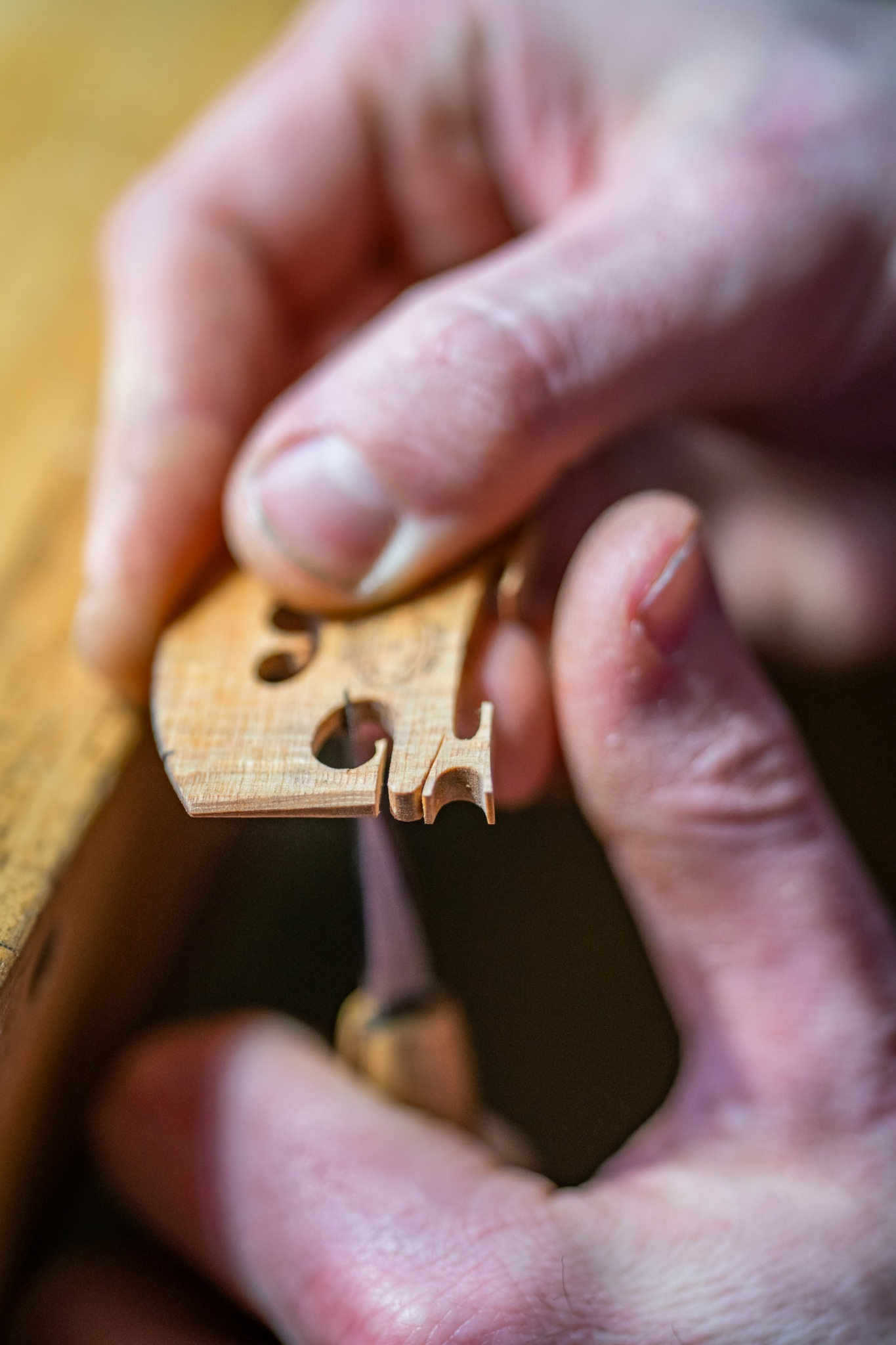
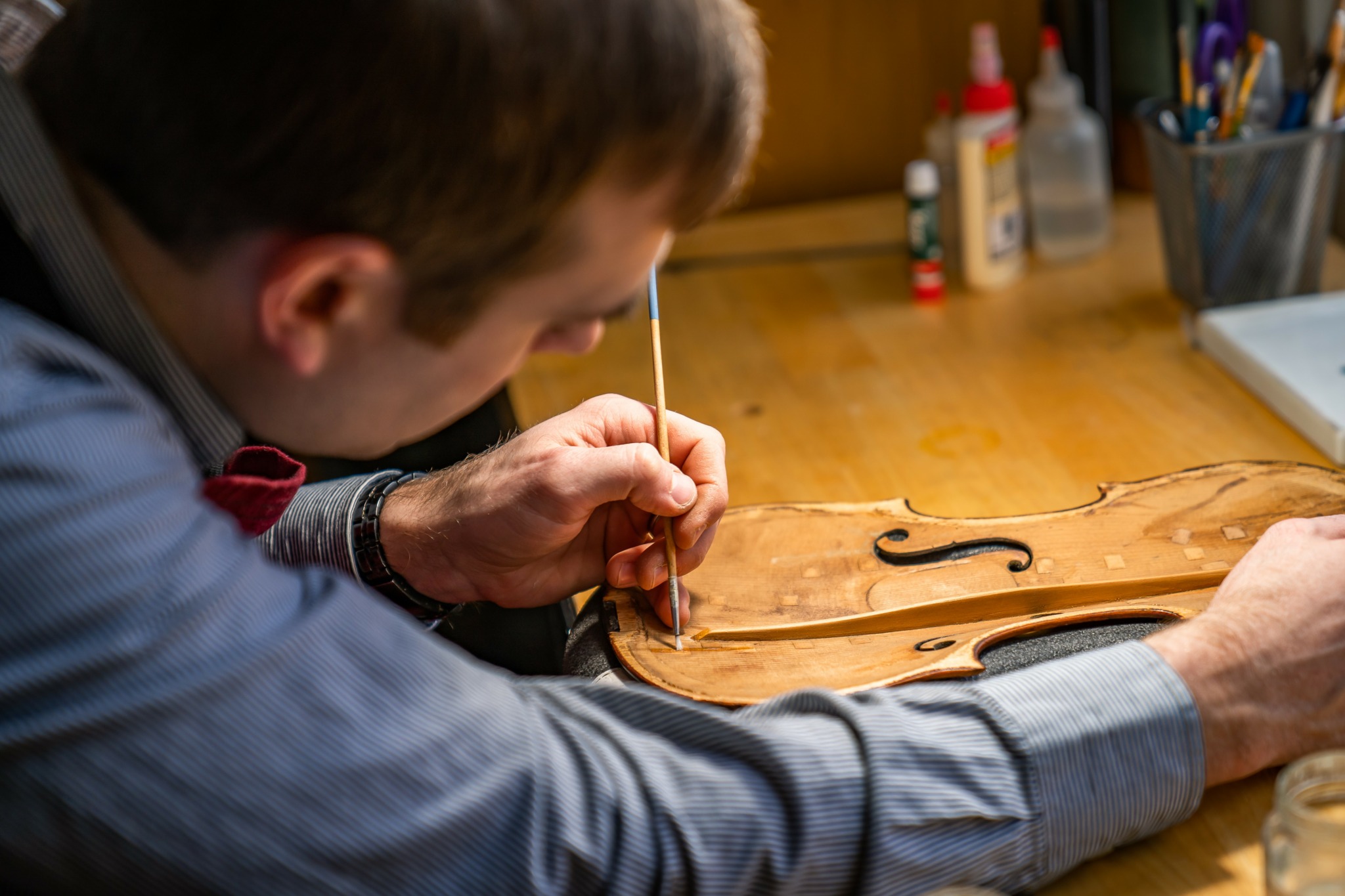
Rich, love having you share your insights with us. Before we ask you more questions, maybe you can take a moment to introduce yourself to our readers who might have missed our earlier conversations?
The violin has been the heartbeat of my family for five generations. My great-great-grandfather, Otis H. Maxham, was the first in my family to cultivate a love for the instrument, first as a professional musician, and then as a maker, repairer, and dealer. He inspired the generations that followed to devote their lives to the violin through his passion, and that pulse has been ever-present through my life.
I began playing at three when my father gave me my first violin and I learned to play under his tutelage for 20 years. I would watch my grandfather when I visited his home workshop, and his ability to make violins and understand their intricacies enthralled me. When I was in high school, a close family friend, “Fiddlin’ Robbie Wells,” who had a small shop in my hometown, encouraged me to start working on violins, and I began visiting his shop to work on repairs with him from time to time. During the summers in college I attended workshops to learn violin repair and restoration at the University of New Hampshire and Oberlin College. Upon graduation I learned to make violins through an apprenticeship with Daniel O. Smith. That process established Smith as a lifetime mentor and friend.
From there I worked in several violin shops, including eight years at The Violin House of Weaver. With Mr. Weaver’s blessing and encouragement, I started my own business in 2019. Over the next few years I developed a clientele and enough demand to make my business my full time career.
I provide setup, repair, restoration, sound adjustments, and bow rehairing and repair to players of violins, violas, and cellos. My clientele includes players of all disciplines of violin playing, and I work with musicians of all ages who are dedicated to their instruments. Having played the violin for almost all of my life has helped me to understand the needs of both the instrument and player, so that my work can be to their mutual benefit.
The legacy of my ancestors and their similar devotion to the violin is an inheritance of which I am immensely proud. I am honored to be put in contact with many excellent people through a shared love of the violin world.

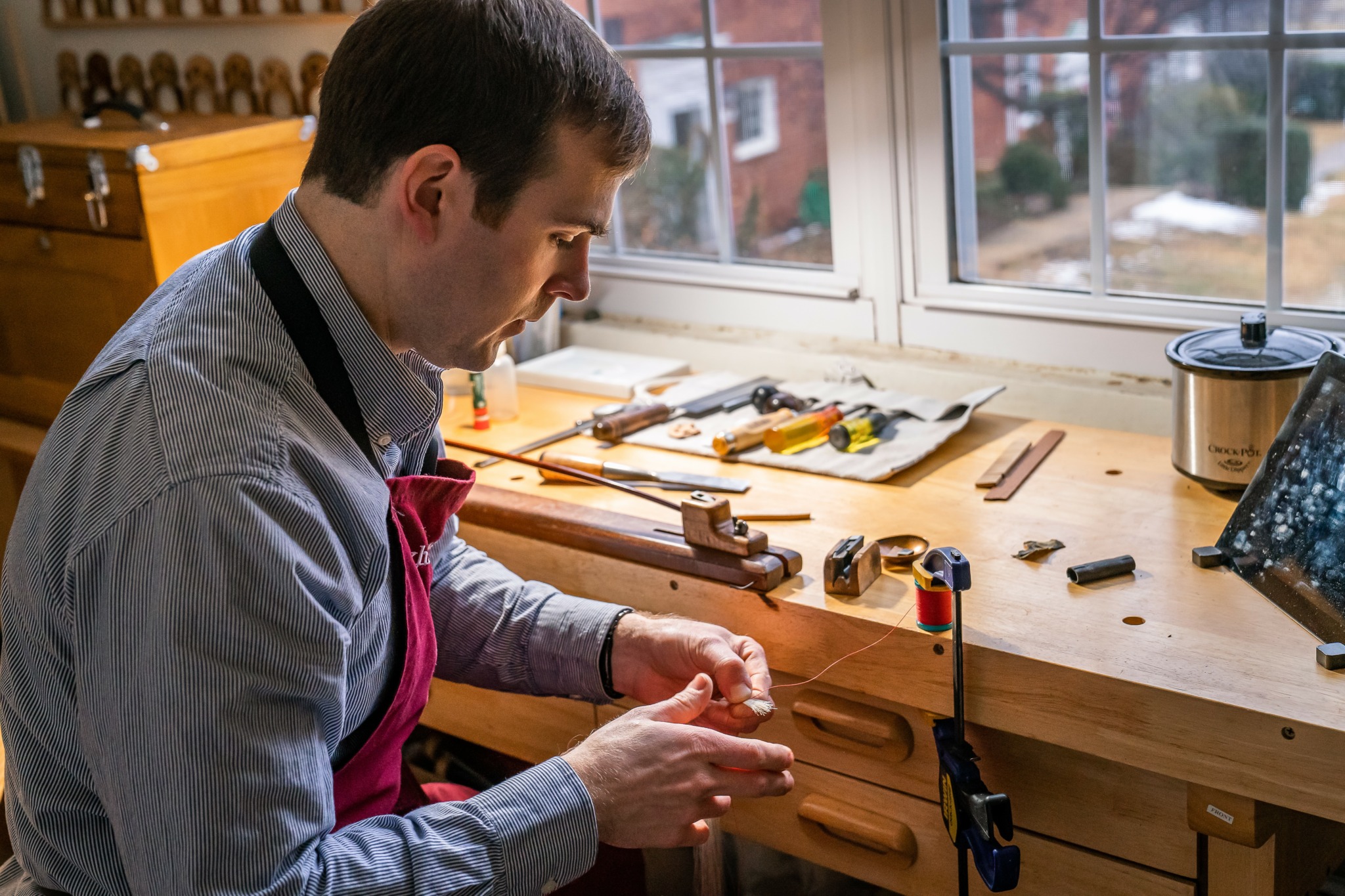
How can we best help foster a strong, supportive environment for artists and creatives?
For artists and creatives, their survival and resilience depends on the engagement of the public. Creatives need to present the public with something of value that edifies their experience with the arts. There’s an unspoken sense of mutual trust between the artist and the public that depends on their willingness to sustain each other. In an age where it’s much easier to access the arts via digital means, it’s vitally important that the direct engagement between artist and public remain intact through regular interaction. The arts can only remain in existence so long as the communities they serve remain involved with them and view them as a vital thread in the tapestry of culture.
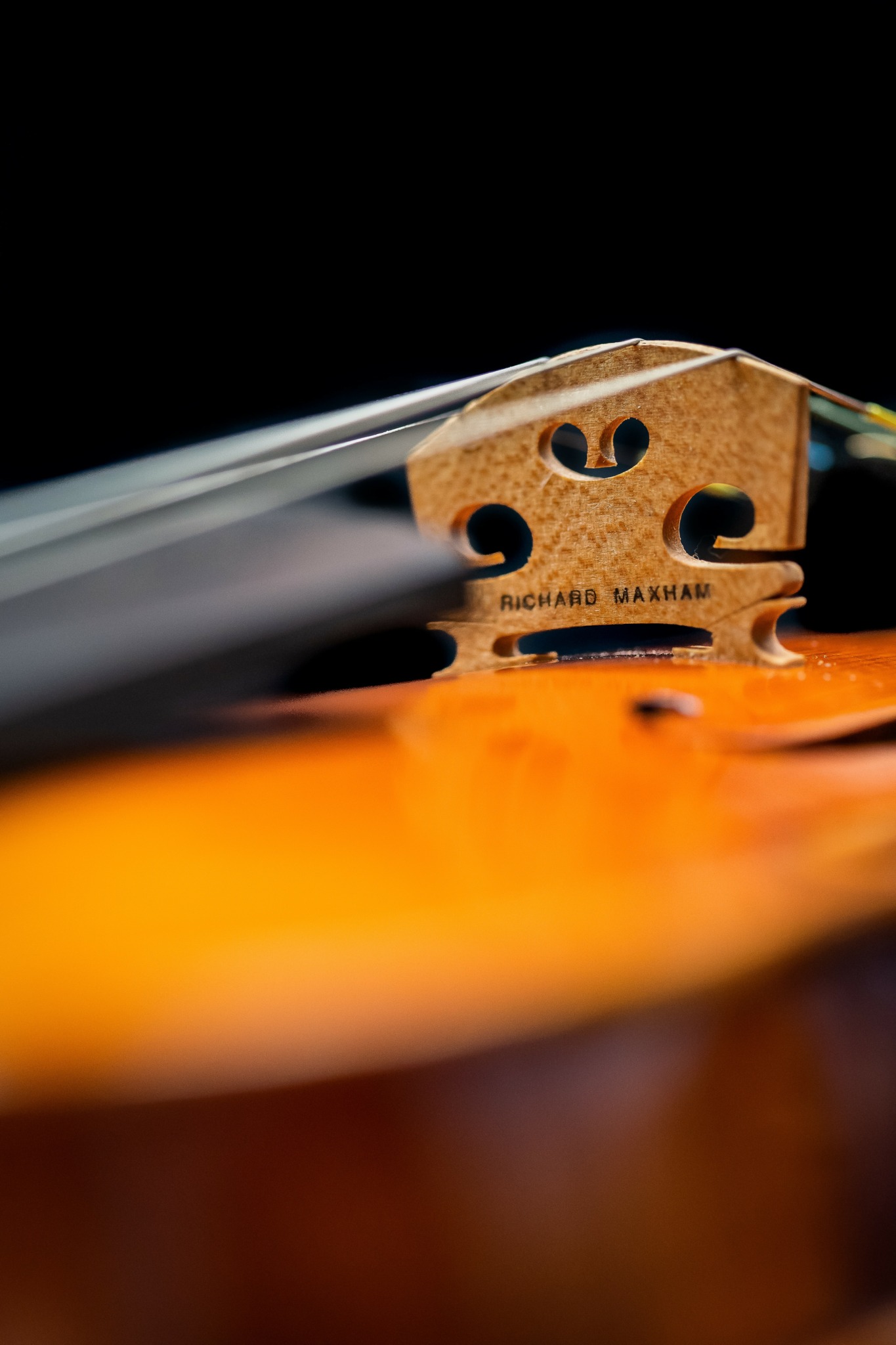
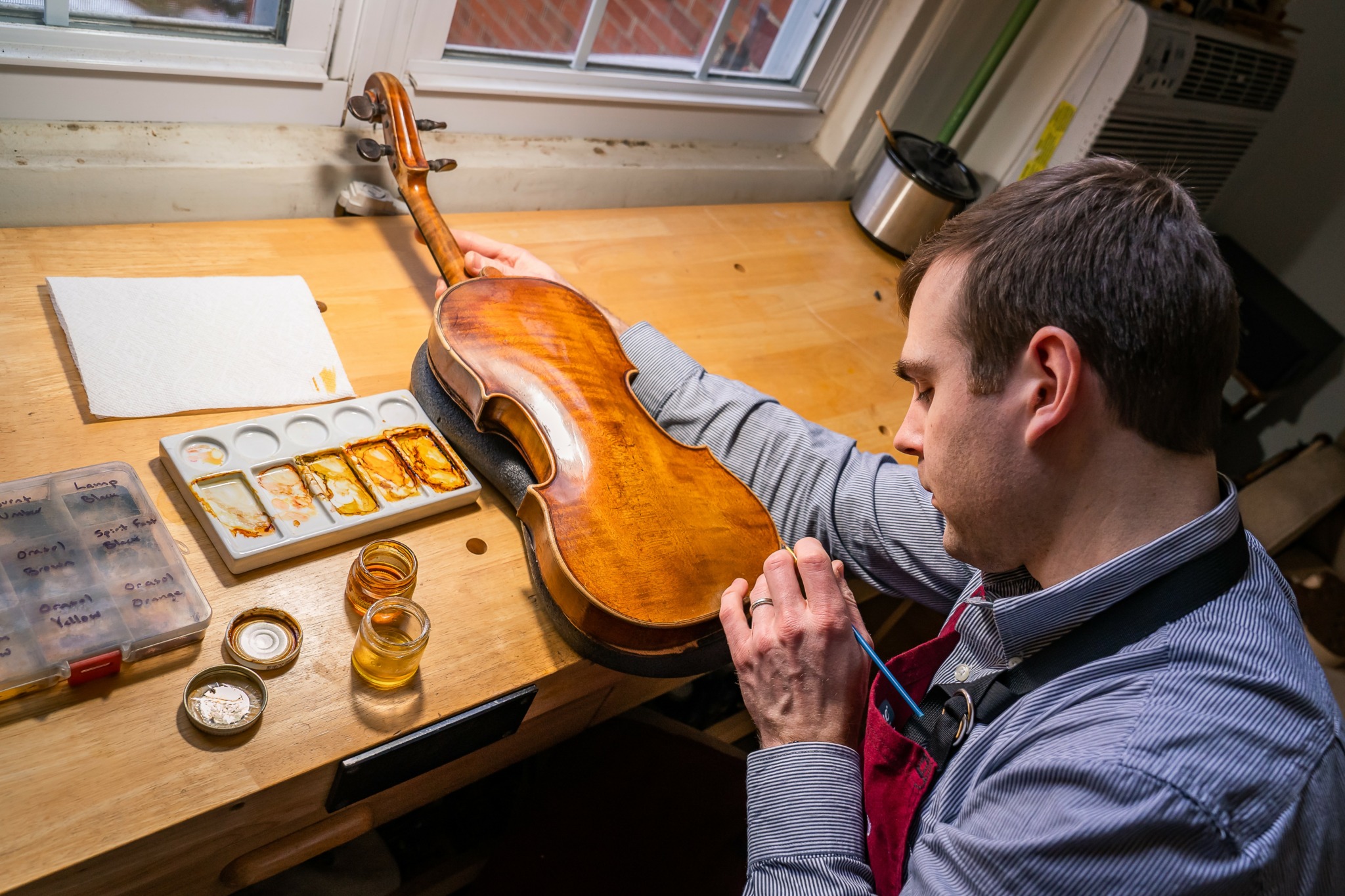
Is there a particular goal or mission driving your creative journey?
By working on violins I hope to carry on the traditions of my family and leave behind me a legacy of having added something to the world of the violin. With each instrument I’m privileged to handle, I wish to add something of value to its life, whether that’s through a repair, a restoration, or an adjustment. If time allows, I hope to provide more instruments of my own to players and to carry forward the tradition of violin making in my family so that I can eventually bequeath it to my children.
Contact Info:
- Website: https://www.maxhamviolins.com/
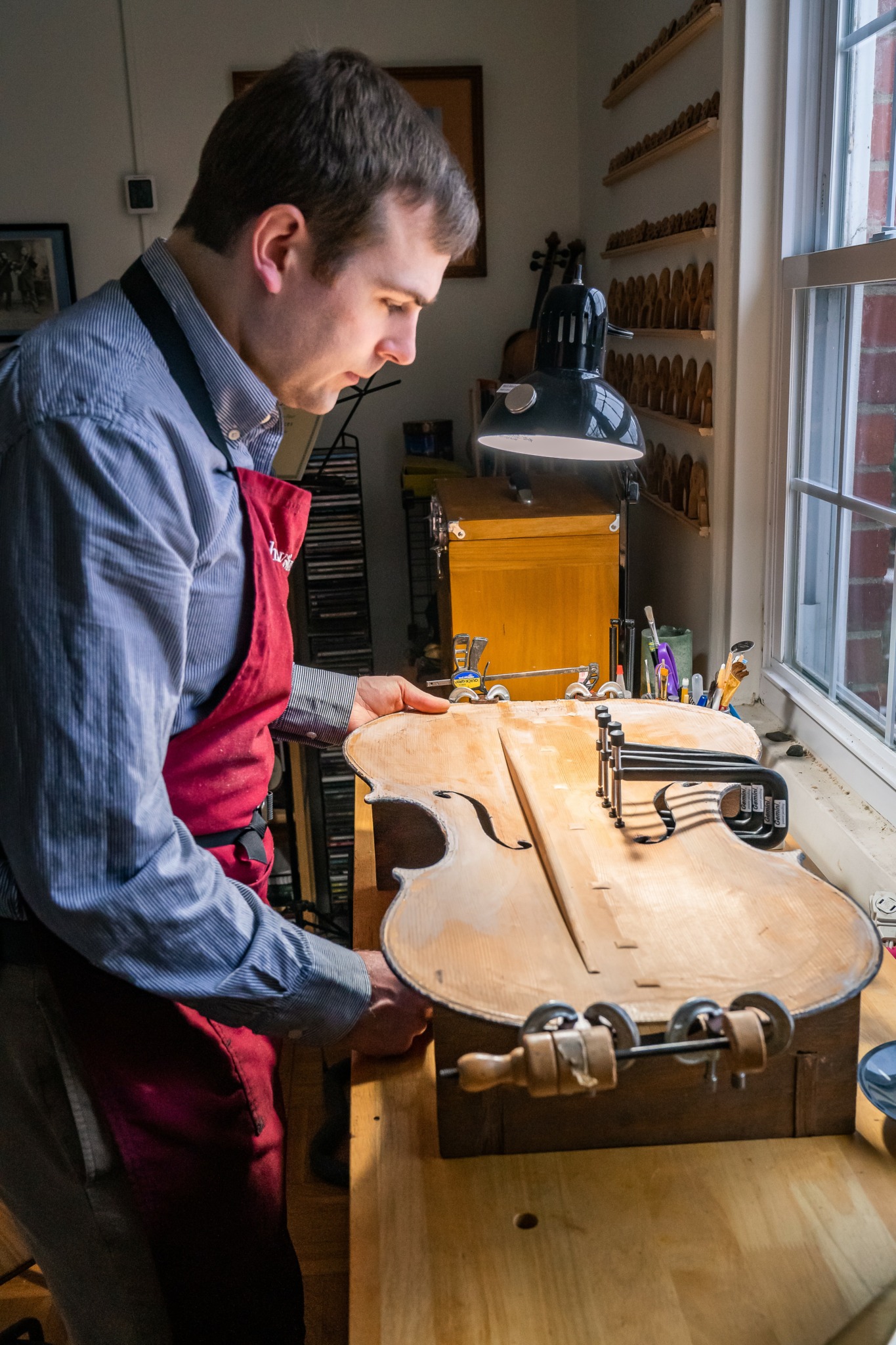
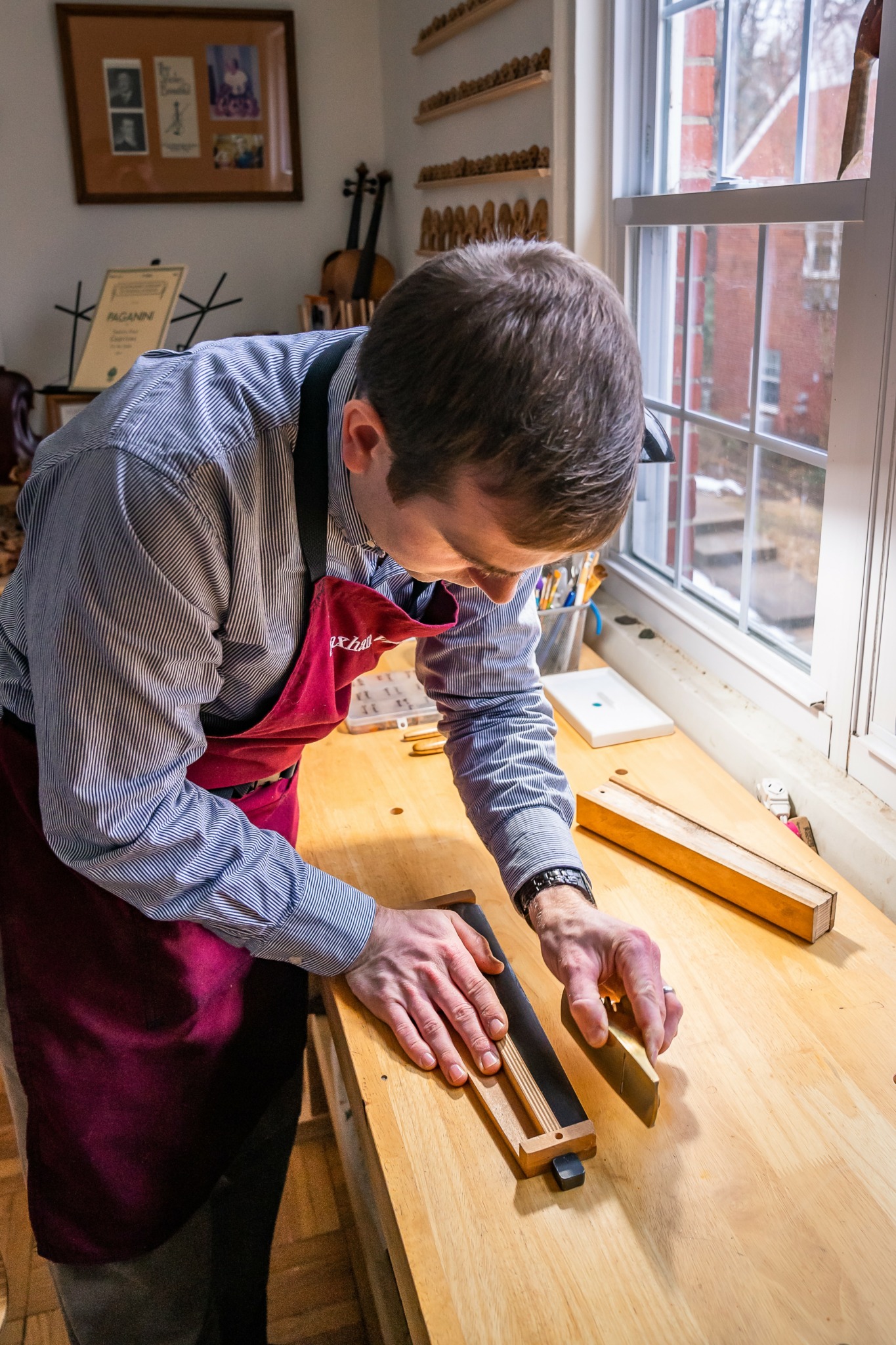
Image Credits
Kevin Gebo


